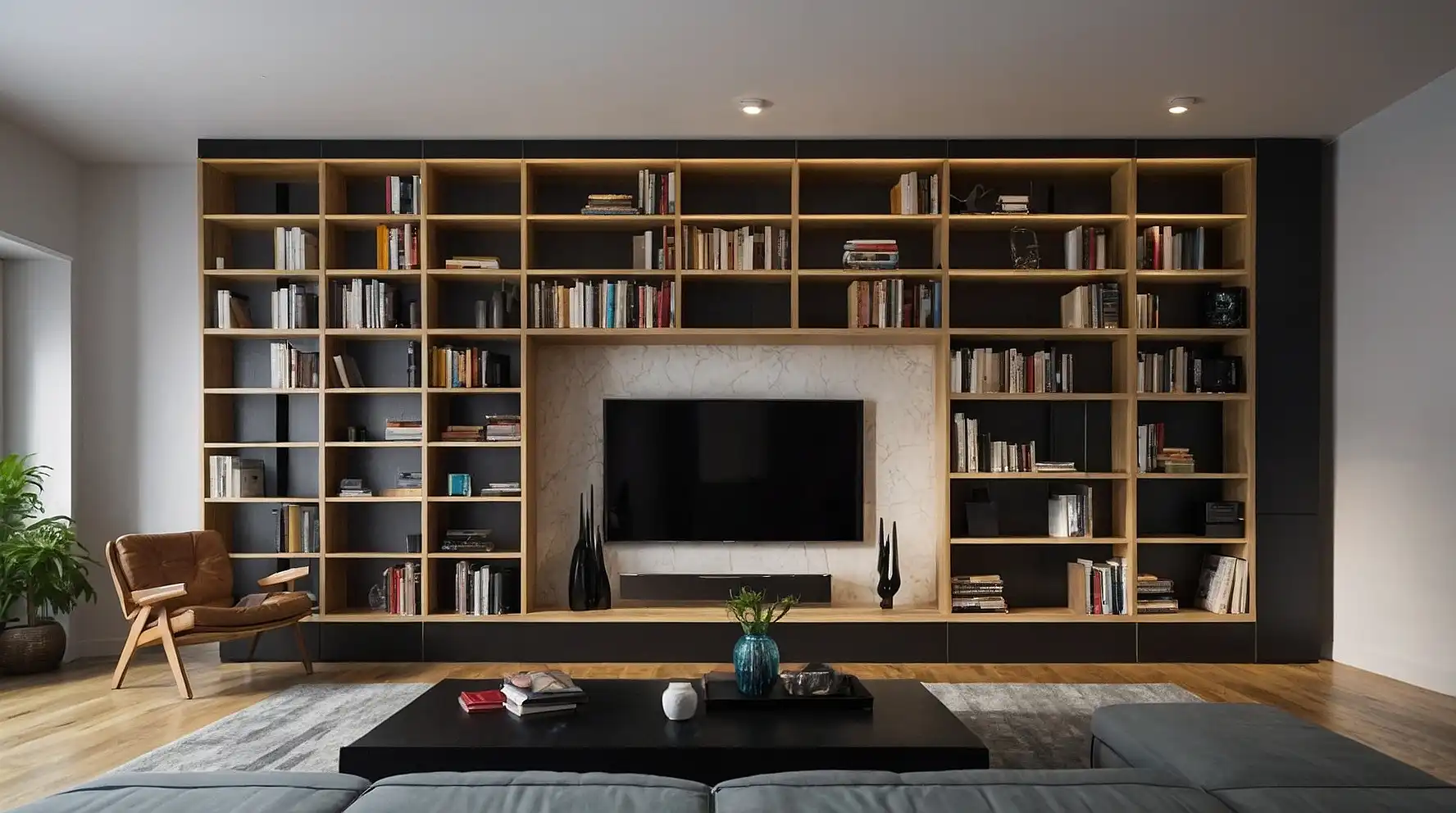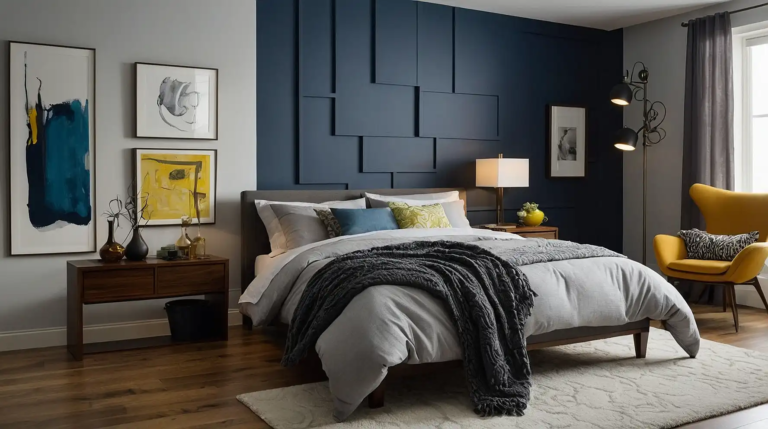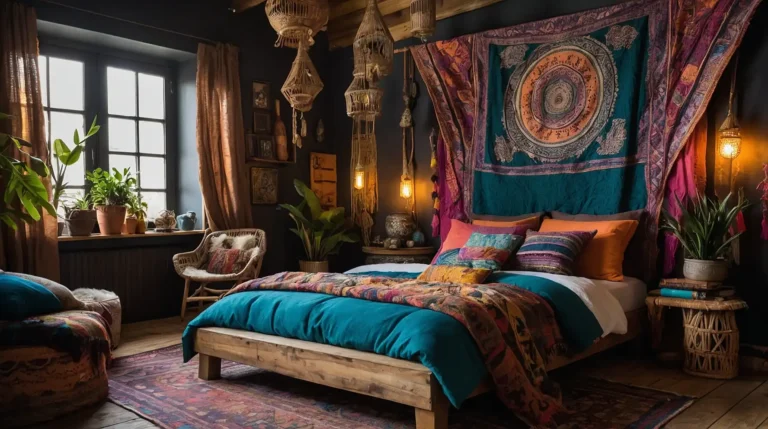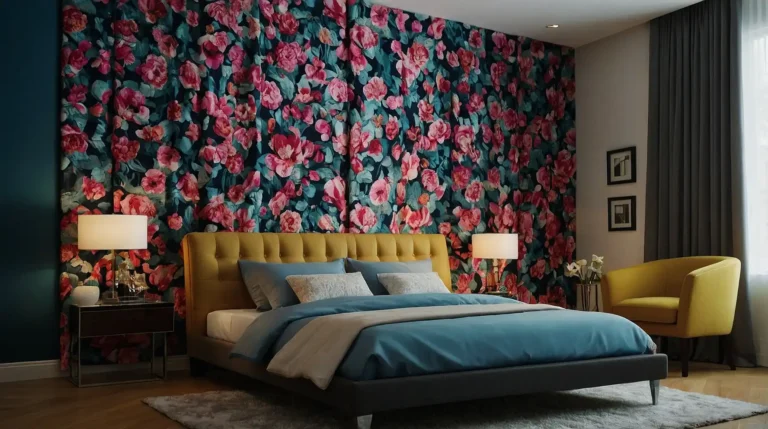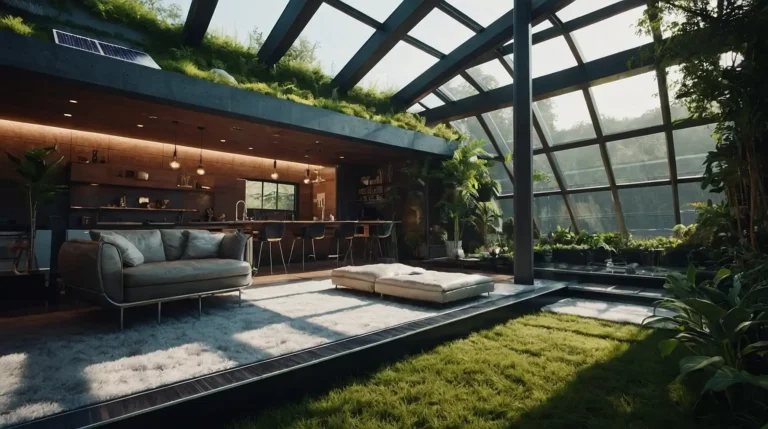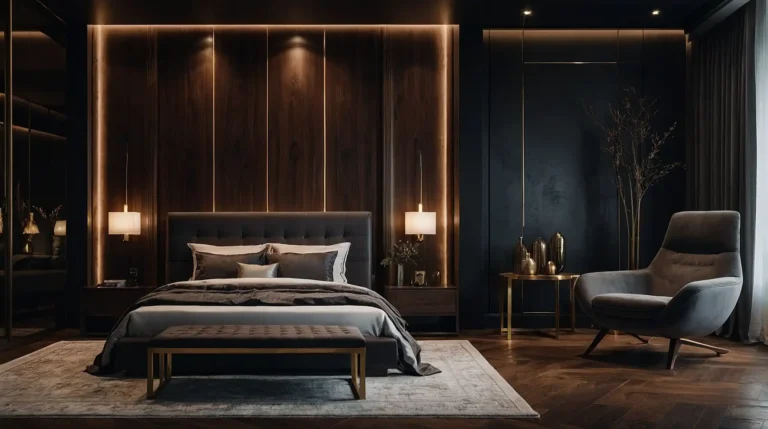27 Brilliant Bookshelf Ideas to Transform Your Home: Ultimate Storage and Style Guide
Bookshelves do more than just store your literary collection—they showcase your personality and transform ordinary spaces into extraordinary ones.
With the right bookshelf, you’ll create a functional focal point that tells your story through both design and display choices.
Whether you’re a minimalist, maximalist, or somewhere in between, these innovative bookshelf ideas will help you reimagine your home’s potential while keeping your favorite reads close at hand.
1: Floor-to-Ceiling Library Wall
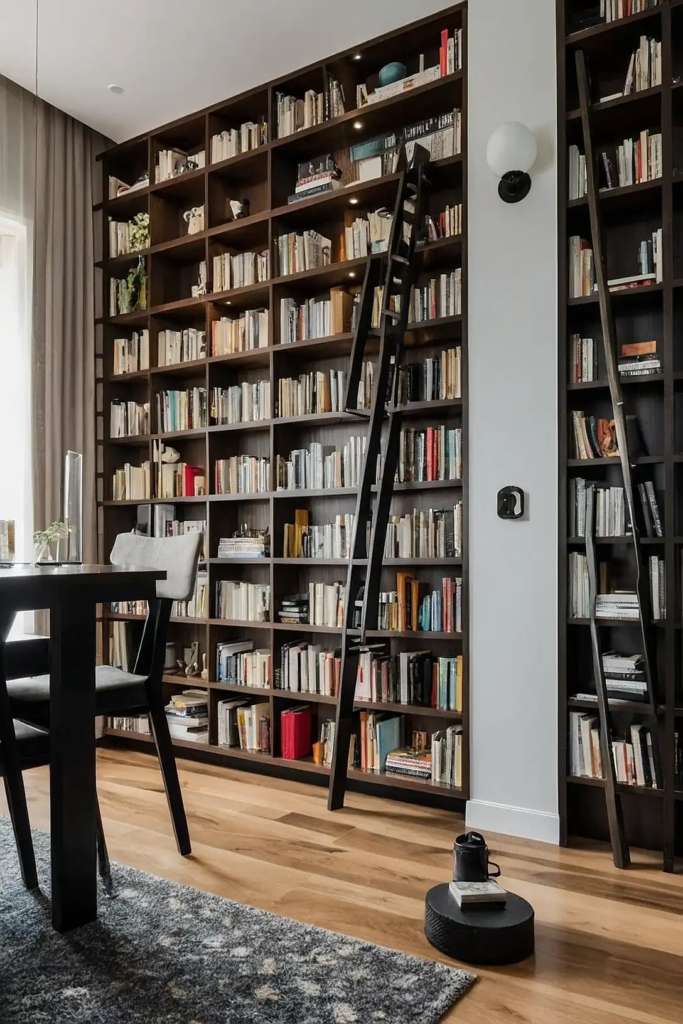
Transform an entire wall into a dramatic home library with floor-to-ceiling shelving.
This classic approach maximizes storage while creating an impressive architectural feature.
Paint the shelves the same color as your walls for a seamless look, or choose a contrasting shade for more visual impact.
The vertical lines naturally draw the eye upward, making your ceiling appear higher.
Add a rolling ladder for both functionality and old-world charm that instantly elevates the sophistication of any room.
2: Under-Stair Shelving
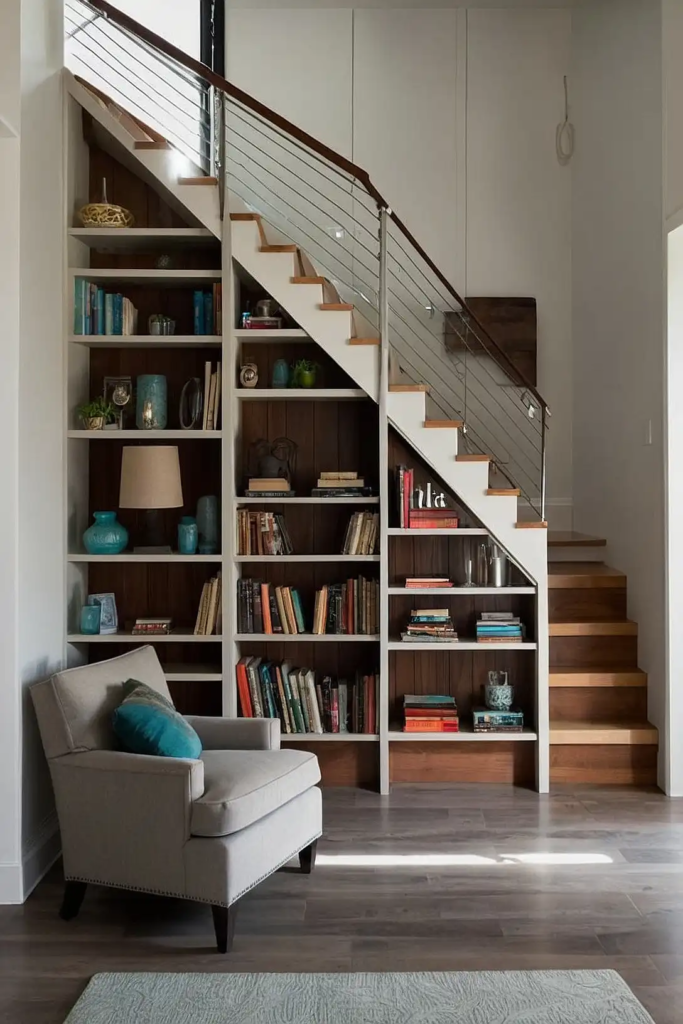
Convert that awkward under-stair space into a custom bookshelf that follows the staircase’s natural diagonal line.
This smart solution transforms previously wasted square footage into valuable storage.
The graduated shelf heights create natural zones for different sized books and decorative objects.
This unexpected placement creates a conversation piece that showcases your creative thinking.
Consider adding small LED lights to illuminate your collection and add warmth to what’s often a dark corner of the home.
3: Floating Corner Shelves
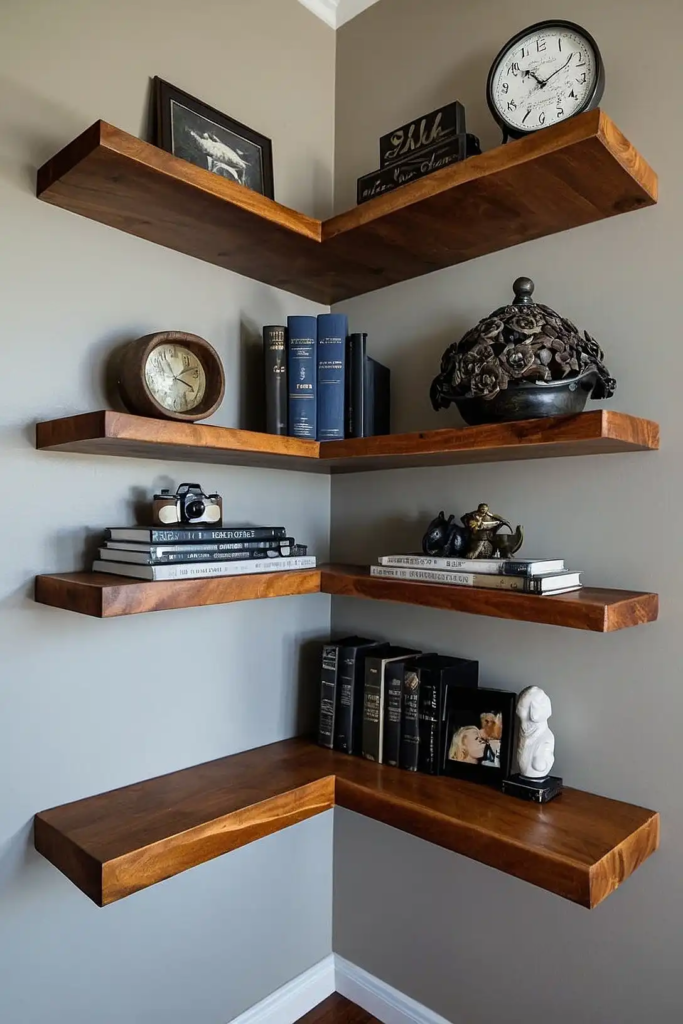
Maximize unused corner spaces with floating shelves that wrap around the angle.
This clever approach transforms dead space into a functional display area with minimal visual weight.
The corner configuration creates an interesting geometric effect that adds architectural interest.
Install shelves at varying heights to create visual rhythm and accommodate different sized objects.
This solution works particularly well in small apartments or rooms where floor space is at a premium.
4: Window-Framing Bookcases
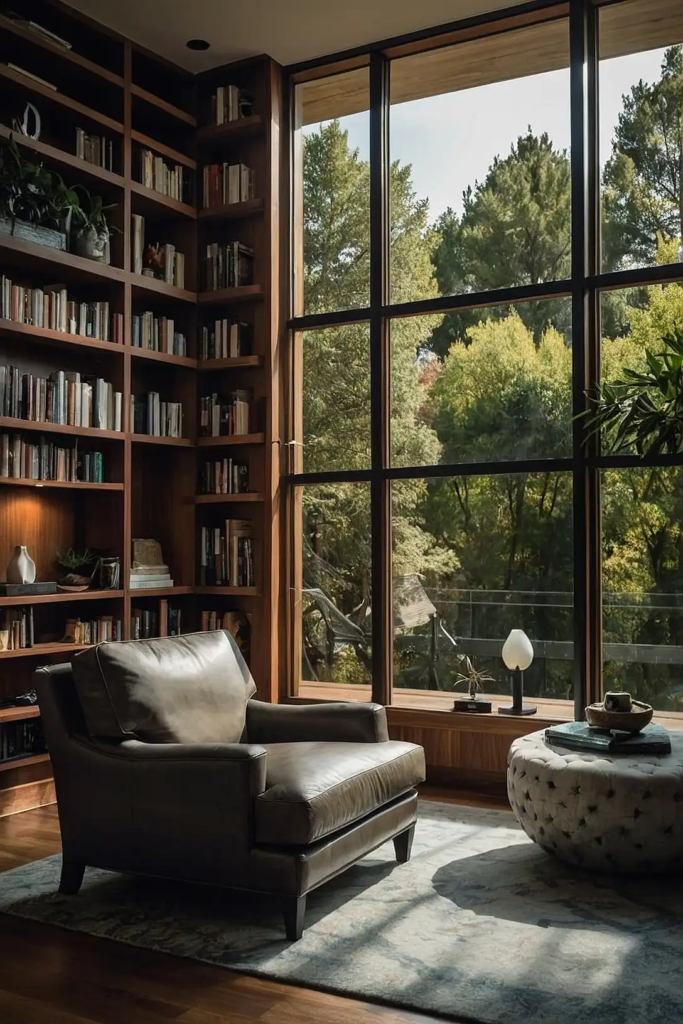
Build bookshelves that frame a window, creating a cozy reading nook in the process.
This approach celebrates natural light while maximizing wall space for your collection.
Add a window seat between the shelves for the perfect reading spot.
The framing effect creates an architectural feature that makes even ordinary windows look custom-designed.
The natural light illuminates your book spines, creating a vibrant, colorful display that changes with the shifting daylight.
5: Room Divider Bookcase
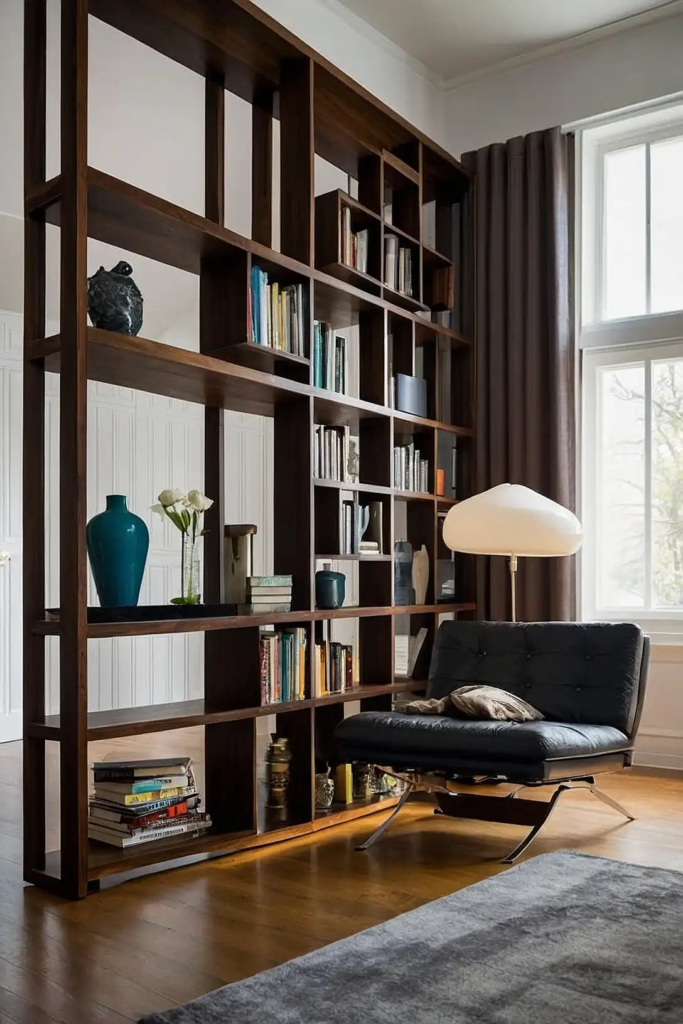
Use a freestanding bookcase as a functional room divider in open floor plans.
This dual-purpose furniture creates distinct zones without the permanence or visual heaviness of a wall.
Choose a unit that allows light to pass through for an airy feel.
Fill shelves strategically, leaving some open spaces to maintain visual flow between the divided areas.
This approach works beautifully in studio apartments or in larger spaces where you want to define living and dining or working areas.
6: Staggered Box Shelving
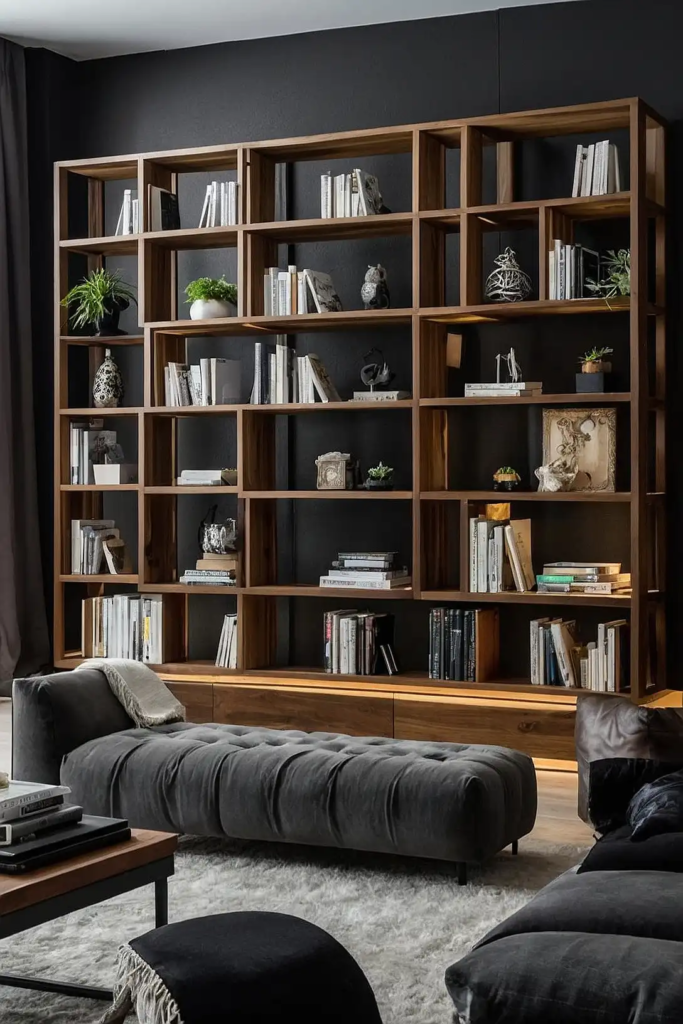
Create dynamic visual interest with box shelves installed in a staggered, seemingly random pattern.
This contemporary approach transforms your book collection into wall art.
Mix box sizes and depths for added dimension and visual complexity.
The negative space between boxes becomes part of the design, creating a sculptural effect on your wall.
This style works particularly well for displaying curated collections of books interspersed with decorative objects.
7: Built-In Media Center
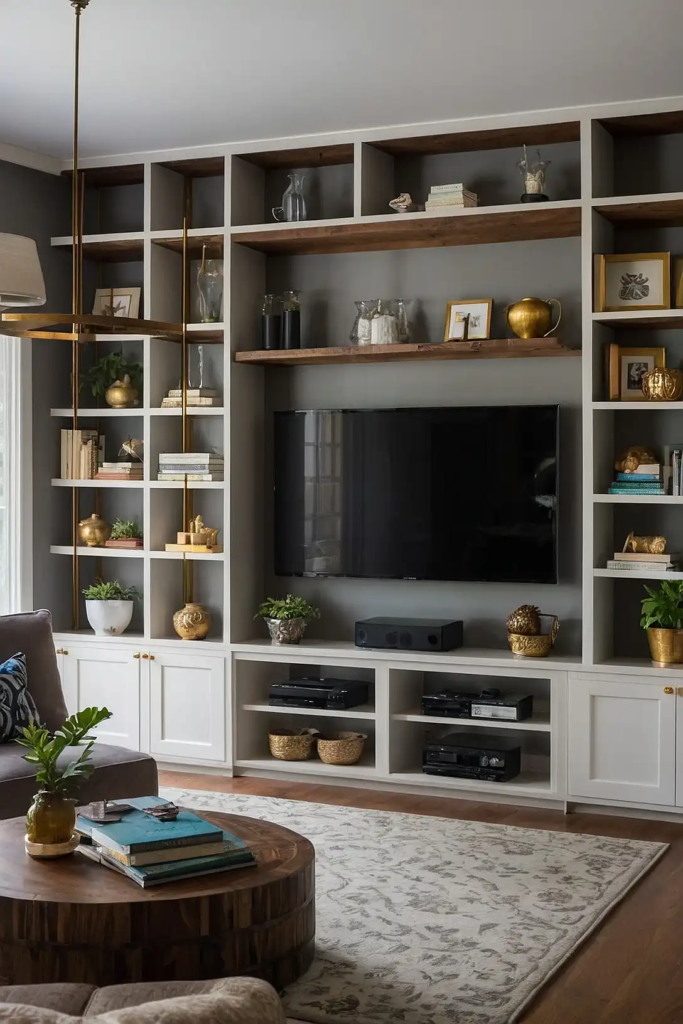
Design a bookshelf that accommodates both books and entertainment equipment.
This multifunctional approach centralizes your media while maintaining design cohesion.
Include adjustable shelves to adapt to changing technology sizes.
Create specific zones for books, decorative objects, and electronic components with thoughtful shelf spacing.
Consider doors for certain sections to hide less attractive items like gaming consoles, routers, or DVD collections.
8: Kitchen Cookbook Display
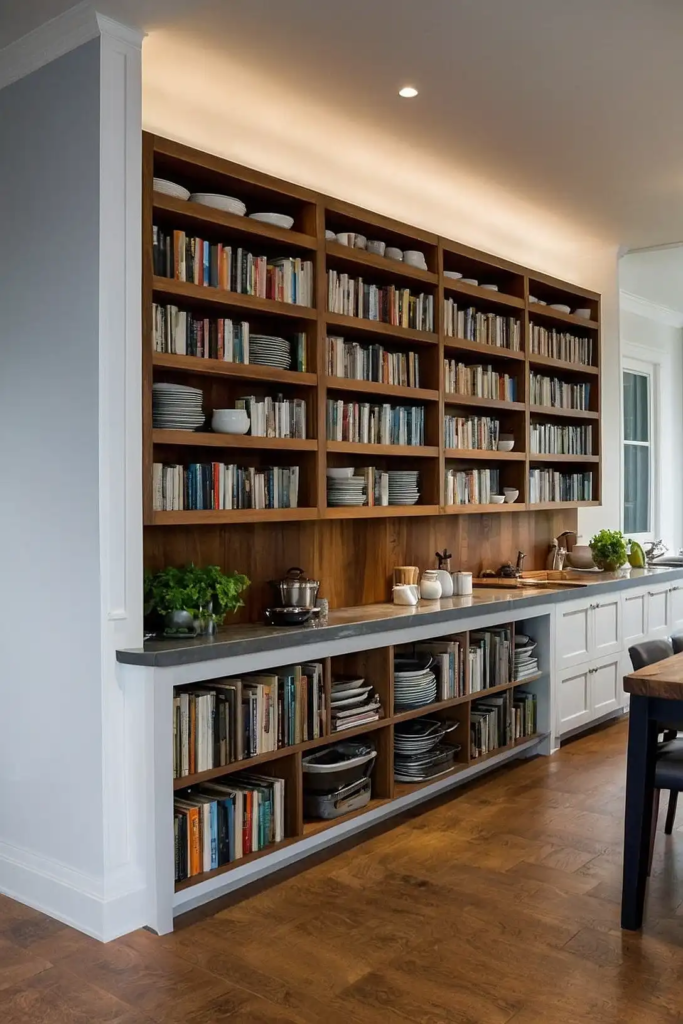
Integrate bookshelves specifically for cookbooks into your kitchen design.
This practical addition keeps inspiration close at hand while adding color and personality to your cooking space.
Install shelves above counters, beside the refrigerator, or on a previously unused wall.
Choose materials that withstand kitchen humidity and are easy to clean, like painted wood or metal.
Group cookbooks by cuisine type or color for both functionality and visual appeal.
9: Ladder Shelf
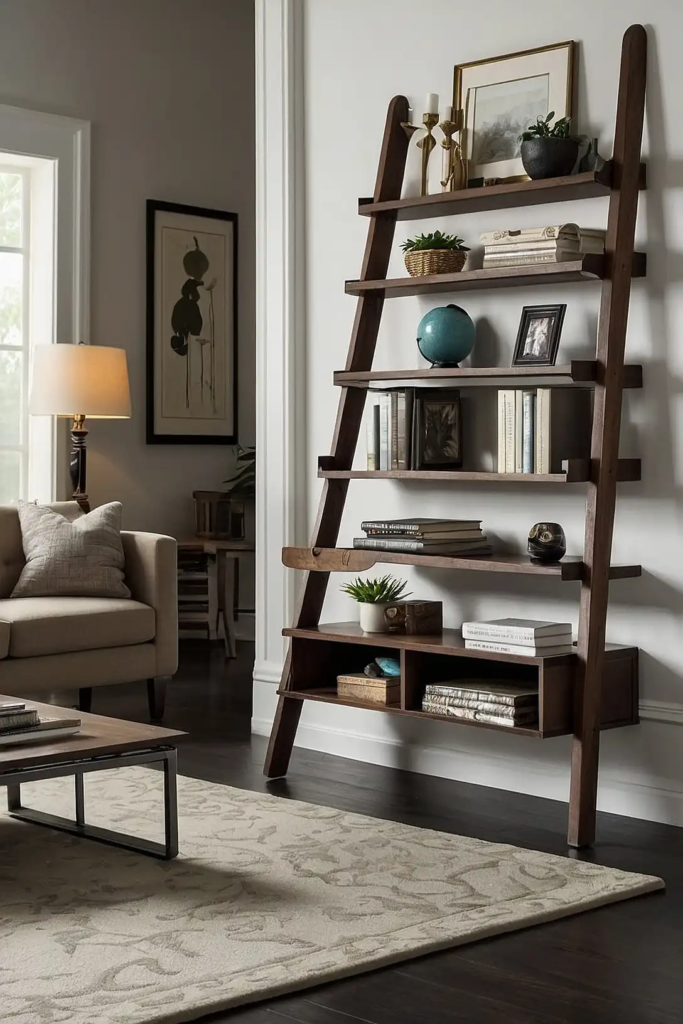
Embrace the popular ladder shelf design for a lightweight, mobile solution. These A-frame units provide graduated shelf depths that naturally showcase your items.
The angled design requires minimal floor space while still offering ample display area. Move these versatile units easily when rearranging furniture or redecorating.
Ladder shelves work exceptionally well for displaying plants interspersed with books, creating a living, breathing wall of interest.
10: Children’s Front-Facing Bookcase

Install low, front-facing bookshelves in children’s spaces to display covers rather than spines.
This design makes book selection easier for young readers while creating a colorful display.
The forward-facing design naturally encourages reading by showcasing attractive covers.
Keep these units lower to the ground to ensure accessibility for little hands and arms.
Include storage bins on bottom shelves for toys or less attractive items that need quick cleanup options.
11: Headboard Bookshelf Combo
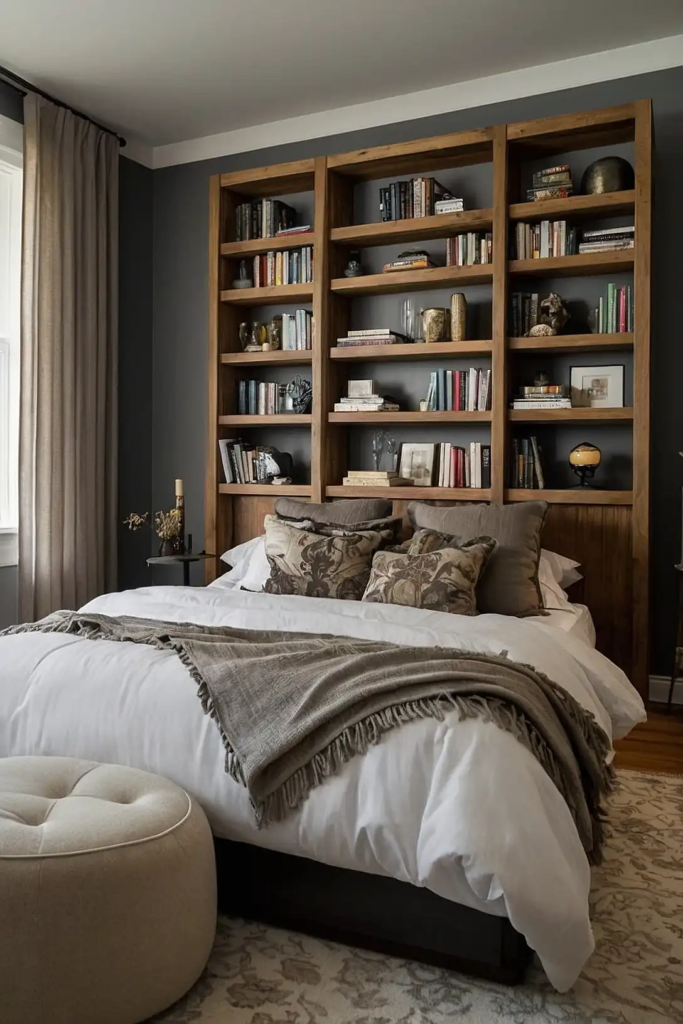
Integrate a bookshelf into your bed’s headboard for the ultimate bedtime reading convenience.
This space-saving design eliminates the need for bedside tables while adding functionality.
Include lighting options within the shelf design for reading without disturbing sleeping partners.
The vertical storage makes excellent use of wall space in smaller bedrooms.
Arrange your current reads, alarm clock, reading glasses, and decorative items within arm’s reach for perfect nighttime functionality.
12: Industrial Pipe Shelving
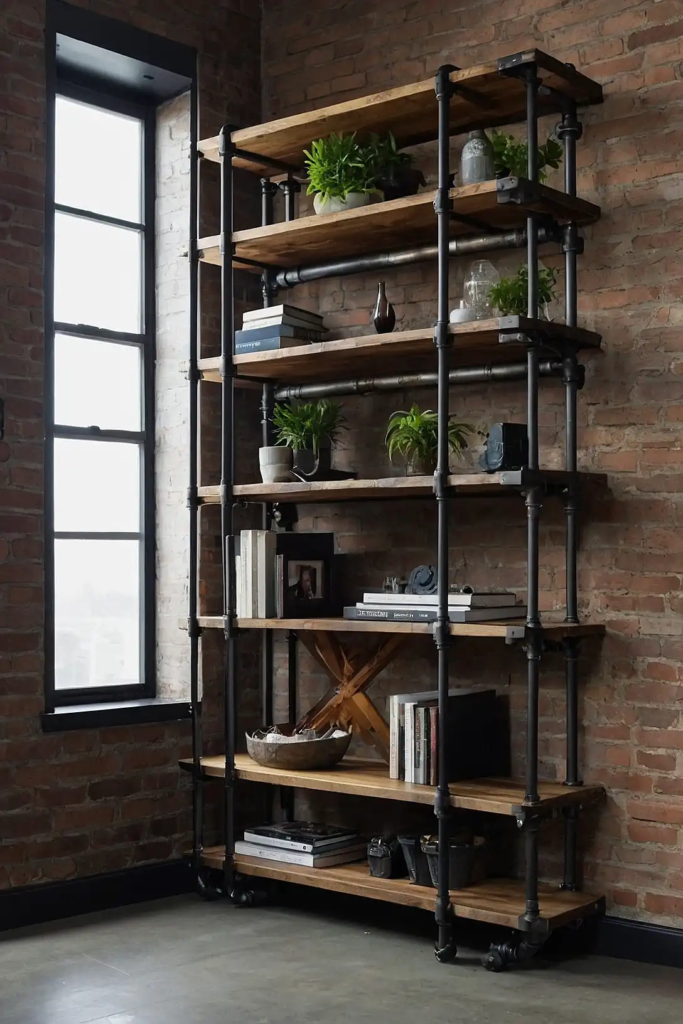
Create rugged, customizable shelving using plumbing pipes and wood planks.
This industrial-inspired approach offers nearly unlimited configuration options for any space.
The raw materials add texture and visual interest beyond standard bookcases.
Customize the depth, height, and number of shelves based on your exact needs and space constraints.
This adaptable system works equally well in lofts, modern homes, or as a contrasting element in more traditional spaces.
13: Vintage Ladder Repurpose
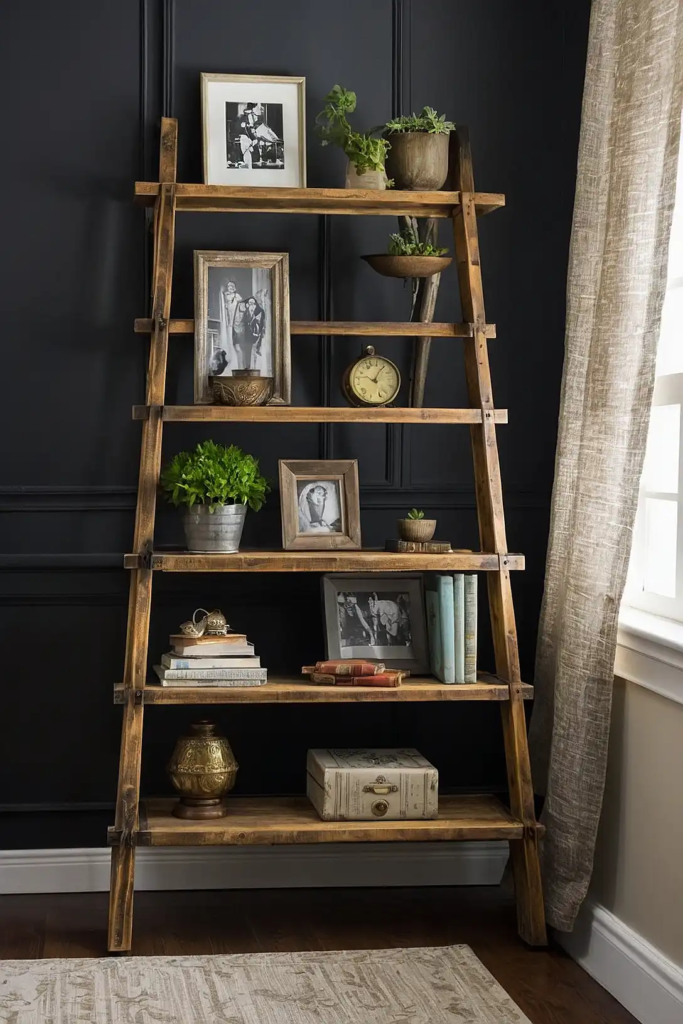
Transform an antique wooden ladder into unique wall-mounted shelving. This upcycled approach adds character while creating functional display space.
Mount the ladder horizontally and use each rung to support a narrow shelf board.
The worn patina and hardware of old ladders add instant history and visual interest to contemporary spaces.
This approach works particularly well for displaying smaller books and decorative objects in bathrooms, hallways, or other narrow spaces.
14: Crate Wall System
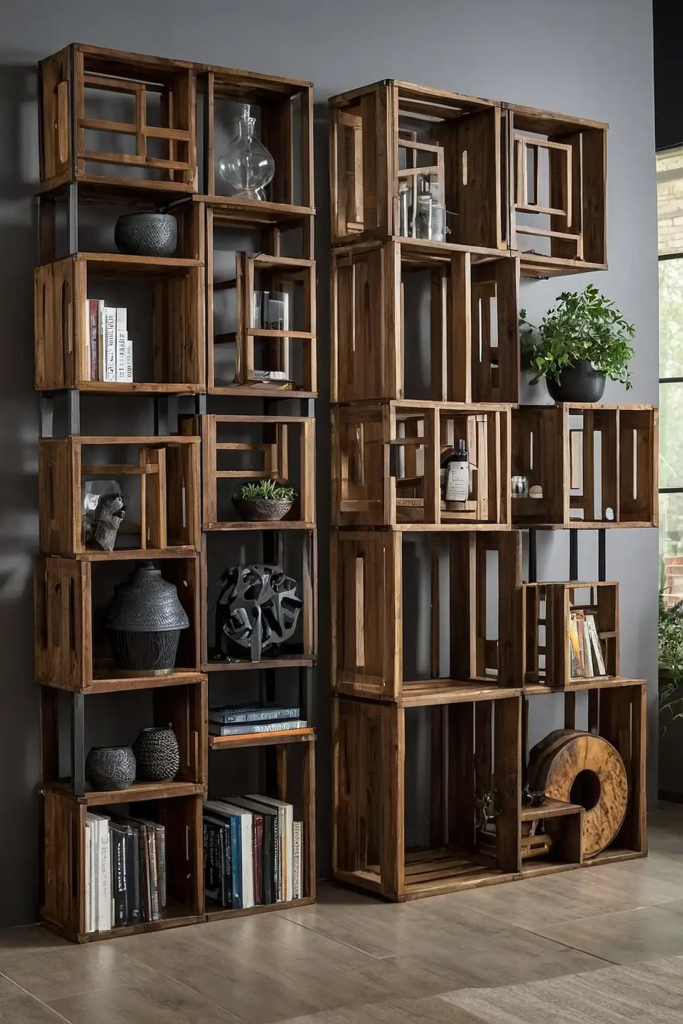
Mount wooden crates in various configurations to create a customizable, rustic-chic storage system.
This approach offers the flexibility to add, subtract, or rearrange modules as needs change.
Source vintage apple crates for authentic character or purchase new ones to stain or paint.
The varying orientations of crates create natural dividers for organizing books by genre or size.
This adaptable system grows with your collection and allows for easy reconfiguration when inspiration strikes.
15: Floating Invisible Bookshelf
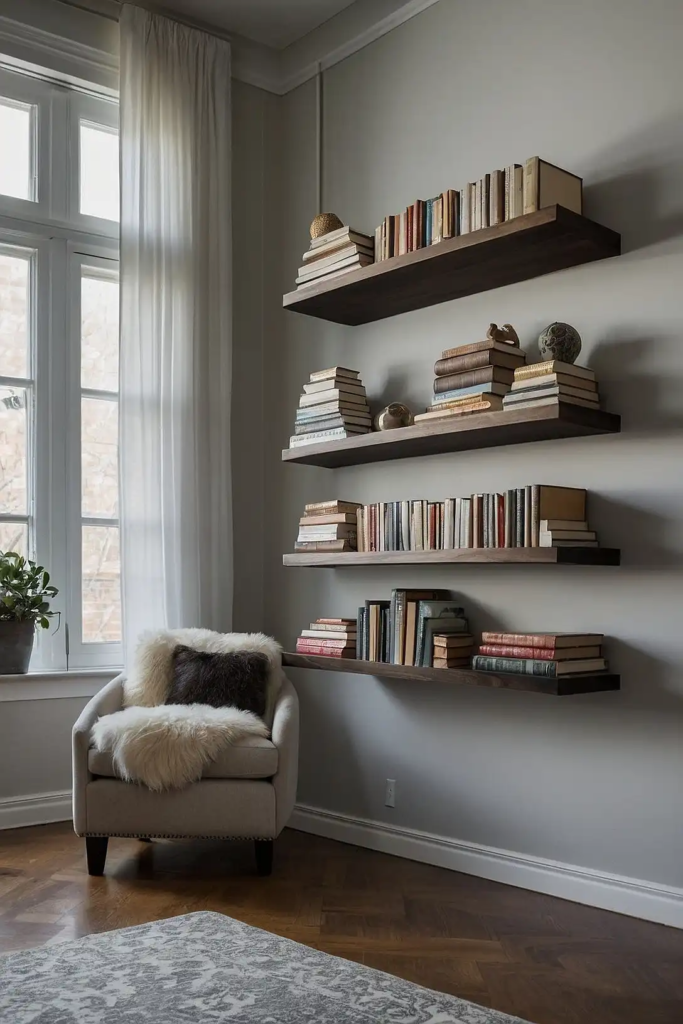
Install “invisible” bookshelves that create the illusion of books floating on your wall.
This minimalist approach puts focus entirely on your book collection rather than the storage unit.
These conversation-starting shelves work by hiding a small bracket inside a sacrificial hardcover book.
Arrange several in unexpected patterns for a truly unique display that showcases book spines as art.
This approach works best for hardcover books of similar sizes displayed in curated arrangements.
16: Bar Cart Bookshelf
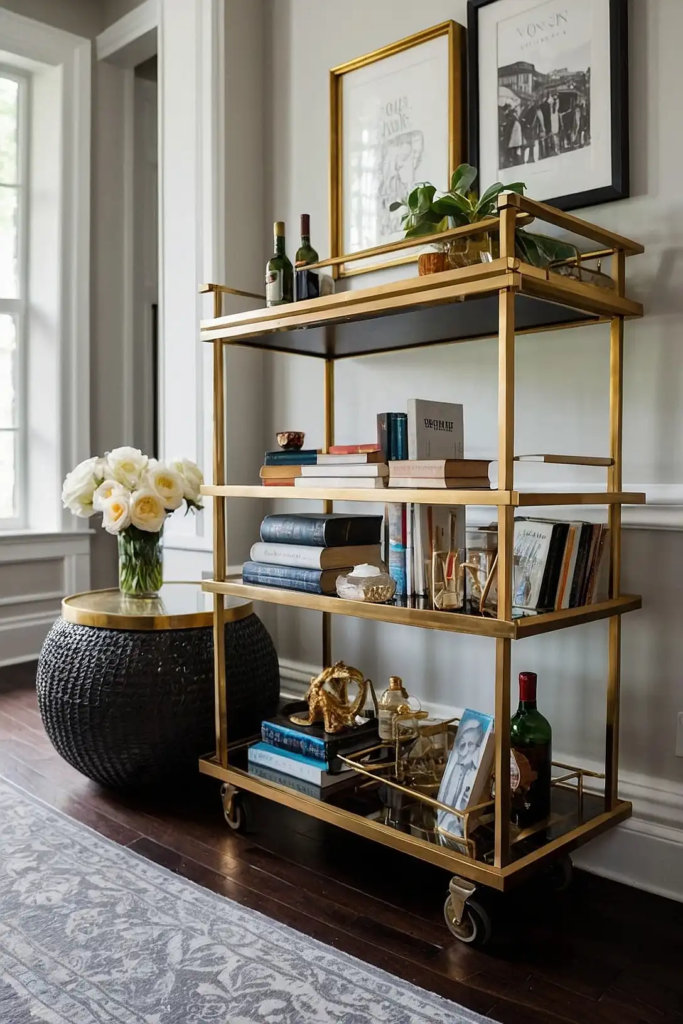
Repurpose a vintage bar cart into a mobile bookshelf for ever-changing displays.
This unexpected conversion adds character while providing the flexibility to move your collection as needed.
The wheels allow you to roll your favorite reads wherever you need them—beside a reading chair, bed, or outdoor space.
The typically open design encourages regular rotation of your displayed books.
Style the top shelf as you would a traditional bar cart, with a plant, lamp, or collection of bookends for visual interest.
17: Hexagonal Wall Shelves

Install honeycomb-shaped shelves for a geometric twist on traditional bookshelves.
This modular system creates visual interest while providing flexible storage options.
Arrange hexagons in flowing patterns across your wall for a truly custom display.
The geometric shape naturally divides your collection into manageable visual groupings.
Mix shelf depths to accommodate books of different sizes and add dimension to your wall arrangement.
18: Picture Rail Bookshelves
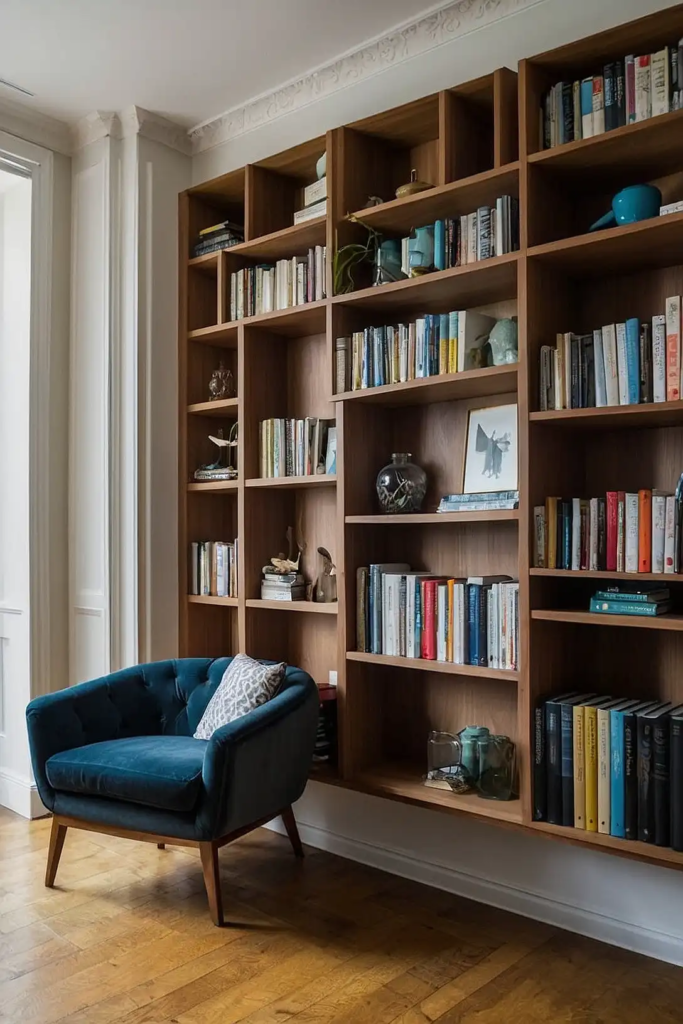
Utilize picture rails to create adjustable, lightweight book displays. This adaptable system allows for frequent rearrangement without additional wall damage.
Install several rails at different heights for a gallery-like display. The forward-facing position showcases beautiful book covers as art pieces in their own right.
This approach works particularly well for oversized art books, children’s books, or frequently rotated seasonal reads.
19: Windowsill Extension Shelf
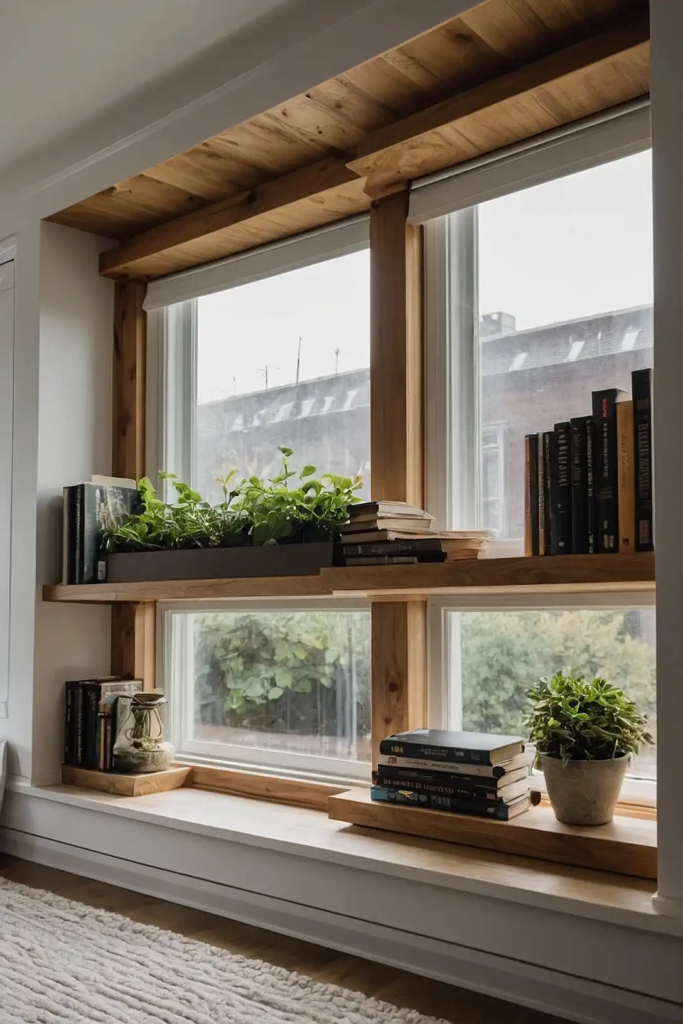
Expand narrow windowsills with custom shelving to create charming book displays.
This approach utilizes often-neglected space while keeping your collection in natural light.
Design the shelf to complement your window trim for an integrated look.
The proximity to natural light creates an inviting reading nook atmosphere, even without additional seating.
Select moisture-resistant finishes if your windows experience condensation to protect both the shelf and your books.
20: Closet Conversion Bookcase

Transform an underutilized closet into a dramatic bookshelf alcove.
This renovation creates an unexpected feature while maximizing storage in small spaces.
Remove the door and add adjustable shelving painted in a bold, contrasting color.
Install small LED lighting to illuminate your collection and create a defined focal point.
This approach creates the built-in bookcase look without the expense of true custom carpentry.
21: Staircase Bookshelf Balustrade
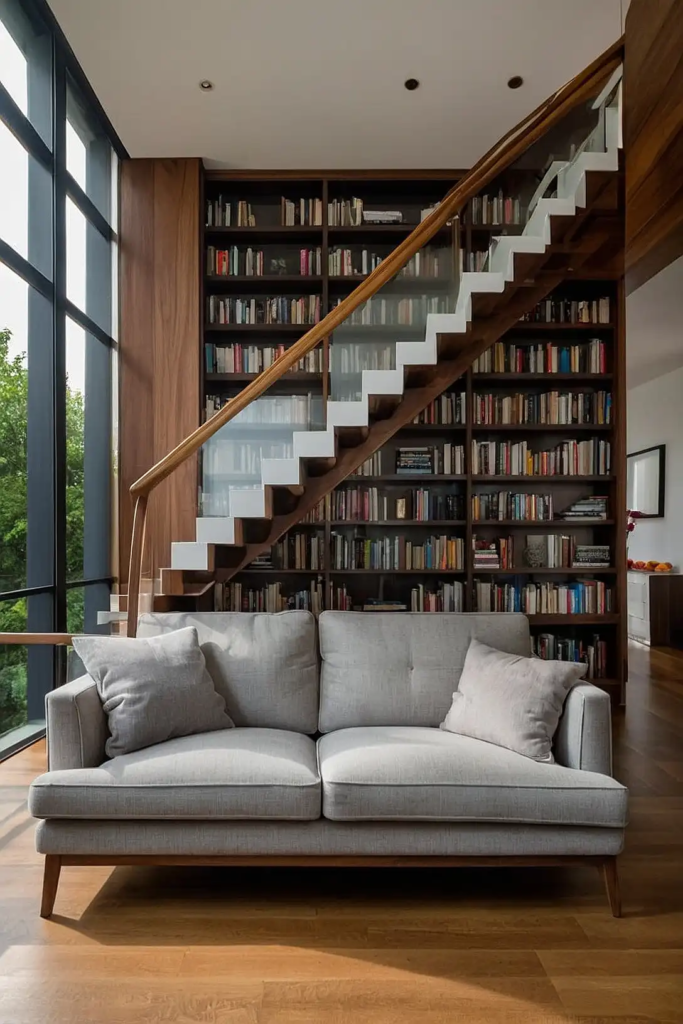
Replace traditional stair railings with bookcase balustrades for a truly innovative storage solution.
This architectural approach transforms a utilitarian feature into functional art.
The staggered design creates natural display cubbies of various sizes.
Ensure proper anchoring and consider local building codes when planning this structural element.
This statement-making feature creates a dramatic first impression while keeping favorite books accessible throughout your home.
22: Upcycled Dresser Bookcase
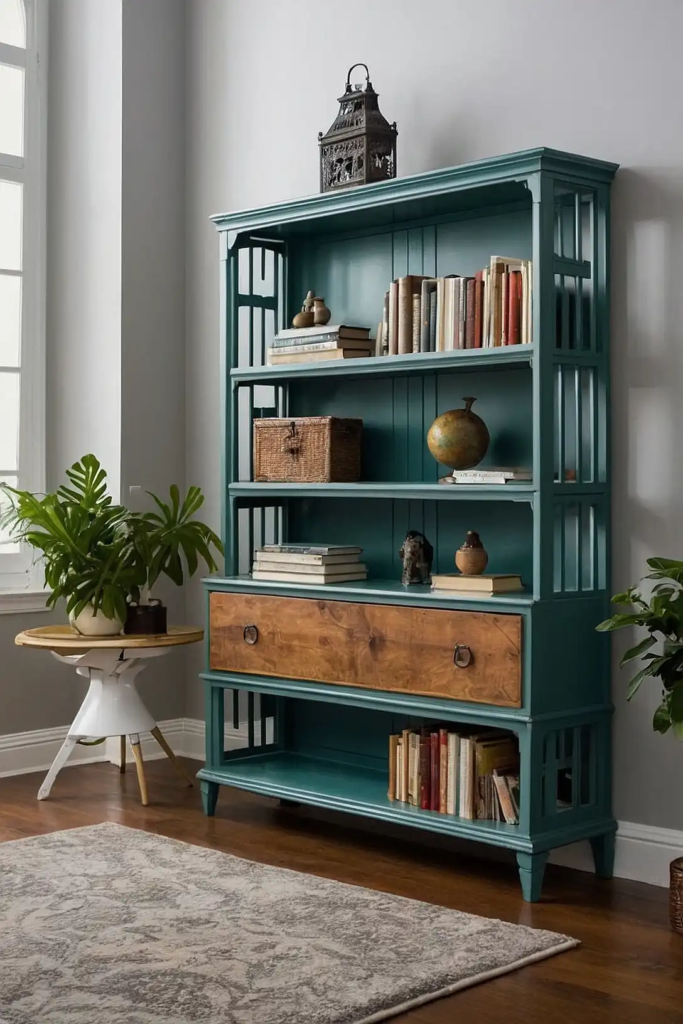
Convert an outdated dresser into a unique bookshelf by removing drawers and adding interior paint.
This sustainable approach gives new life to pieces that might otherwise be discarded.
Keep some drawers functional for storing smaller items or literary ephemera.
The combination of open shelving and closed storage creates visual interest and practical functionality.
The original drawer pulls and hardware add character and a sense of history to your custom creation.
23: Rolling Library Ladder
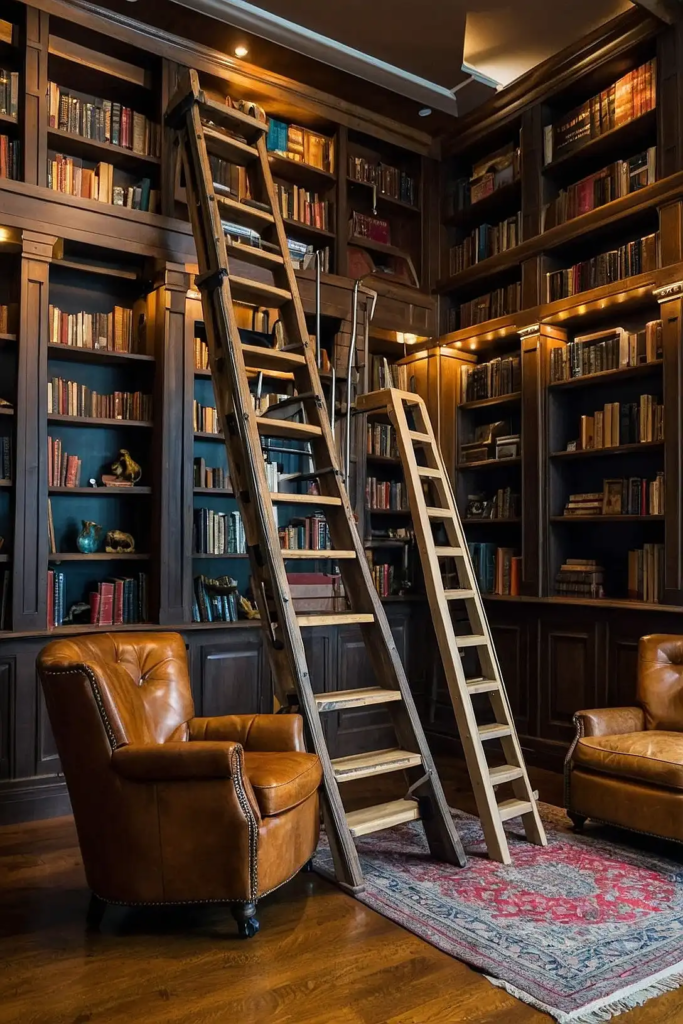
Add a classic rolling library ladder to access high shelves with vintage-inspired style.
This practical addition transforms basic bookshelves into an architectural feature.
Choose from traditional wood designs or more contemporary metal options. The track system allows the ladder to slide horizontally across long walls of shelving.
Beyond functionality, this addition creates a sense of old-world sophistication that elevates your entire space.
24: Color-Coded Book Arrangement
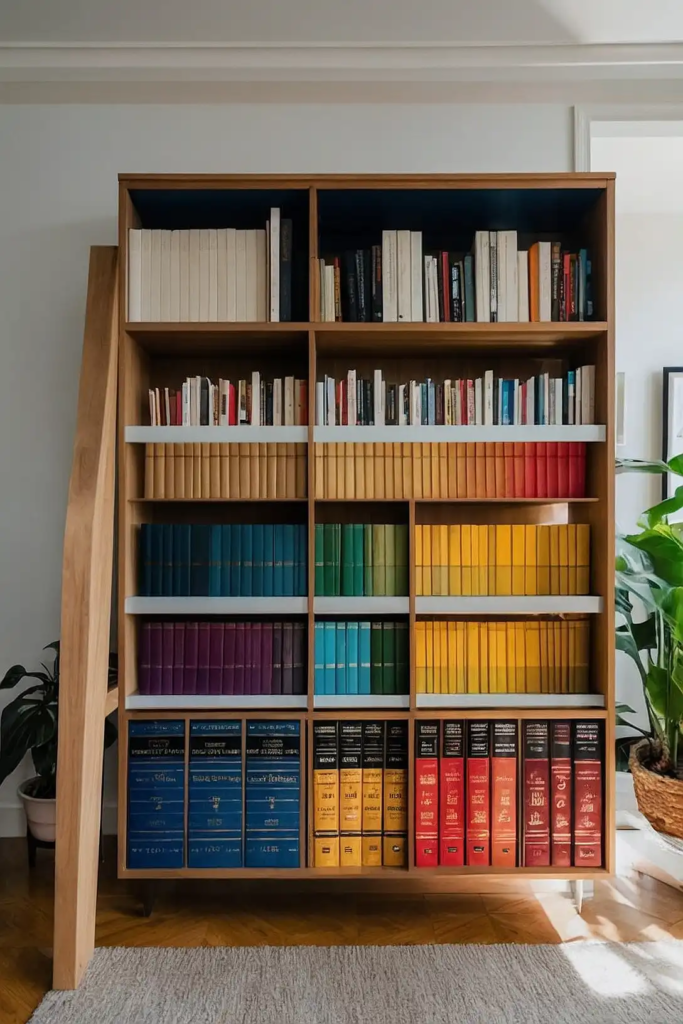
Organize your existing bookshelves by color to create a rainbow effect. This visual approach transforms your collection into a cohesive art installation.
The ombré arrangement creates a natural focal point that draws the eye.
This organization method works with any bookshelf style, instantly updating your space without purchasing new furniture.
While some find this approach impractical for finding specific titles, the striking visual impact often outweighs this concern for design enthusiasts.
25: Ceiling-Mounted Corner Shelves
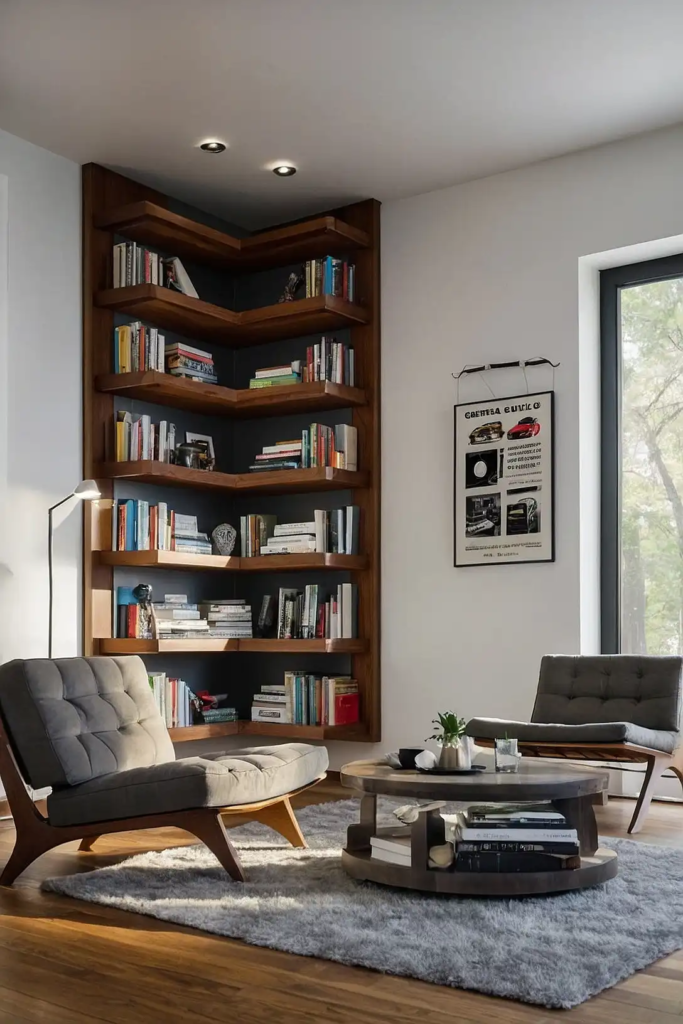
Utilize the often-neglected space where walls and ceiling meet with suspended corner shelving.
This unexpected placement draws the eye upward and maximizes storage in small rooms.
The elevated position keeps special collections safe from pets and young children. The floating effect creates architectural interest in otherwise forgettable corners.
This approach works particularly well for displaying items viewed from below, like model aircraft or special collections.
26: Desk-Integrated Bookshelf

Combine your workspace and book storage with a desk that incorporates shelving.
This integrated approach keeps reference materials within arm’s reach while maximizing floor space.
Choose designs with shelving above, beside, or surrounding the work surface.
The proximity encourages regular use of your books rather than purely decorative arrangement.
This solution works particularly well in home offices, student rooms, or creative studios where inspiration and reference are essential.
27: Bookshelf Wallpaper Backsplash
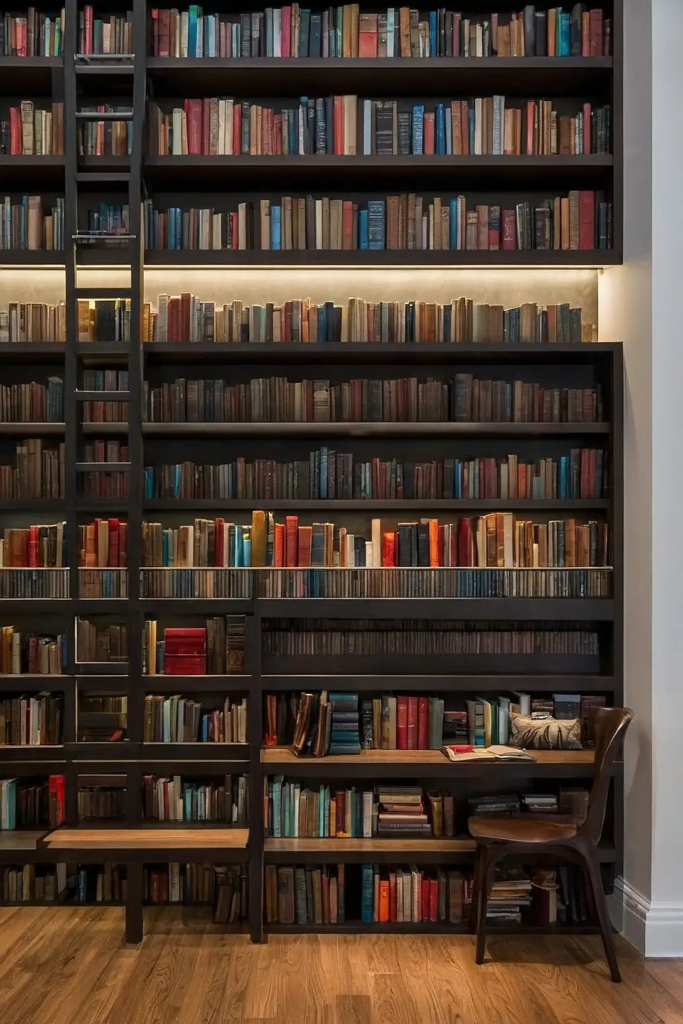
Add dimension to existing shelving with trompe l’oeil bookshelf wallpaper as a backdrop.
This unexpected approach creates the illusion of depth and additional books behind your actual collection.
The visual trick adds personality and whimsy to standard bookshelves. Choose vintage library imagery or contemporary designs based on your overall aesthetic.
This simple addition transforms basic shelving units into conversation pieces without structural changes.
Conclusion
Bookshelves should reflect your personality while solving storage challenges.
Choose designs that showcase what you love, create conversation, and transform ordinary spaces into extraordinary ones.

